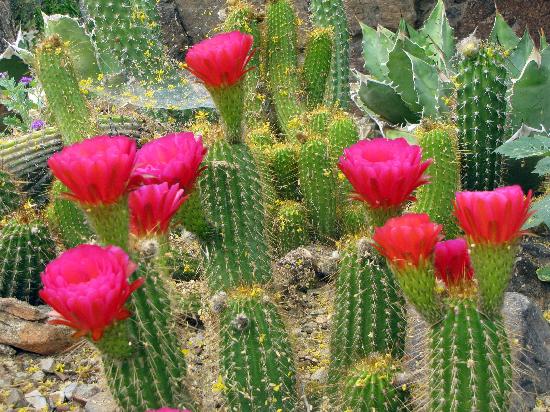Stamp: Saguaro Cactus, Gila Woodpecker (Saint Vincent and The Grenadines 1999)
Saguaro Cactus, Gila Woodpecker (Saint Vincent and The Grenadines 1999)
12 April (Saint Vincent and The Grenadines ) within release Fauna and flora goes into circulation Stamp Saguaro Cactus, Gila Woodpecker face value 70 East Caribbean cent
| Stamp Saguaro Cactus, Gila Woodpecker in catalogues | |
|---|---|
| Michel: | Mi: VC 4583 |
| Stamp Number: | Sn: VC 2683h |
Stamp is square format.
Also in the issue Fauna and flora:
- Stamp - Arrow Poison Frog, Bromeliad face value 70;
- Stamp - Cactus Wren, Saguaro Cactus face value 70;
- Stamp - Cecropia Tree, Howler Monkey face value 70;
- Stamp - Cecropia Tree, Toucan face value 70;
- Stamp - Collared Lizard, Barrel Cactus face value 70;
- Stamp - Cowblinder Cactus, Gilamonster face value 70;
- Stamp - Coyote, Prickly Pear Cactus face value 70;
- Mini Sheet - Fauna flora of the world face value 12*70;
- Stamp - Fer-de-Lance, Zebra Plant face value 70;
- Stamp - Green Turtle (Chelonia mydas) face value 20;
- Stamp - Hedgehog Cactus, Roadrunner face value 70;
- Stamp - Jaguar, Tillandsia face value 70;
- Stamp - Lesser Bird of Paradise, Aristolochia face value 70;
- Stamp - Macaw, Kapok Trees face value 70;
- Stamp - Margay, Sierra Palm face value 70;
- Stamp - Morning Dove, Organ Pipe Cactus face value 70;
- Stamp - Ocitillo, Puma face value 70;
- Stamp - Organ Pipe Cactus, Gray Fox face value 70;
- Stamp - Paloverde Tree, Burrowing Owl face value 70;
- Stamp - Parides sp., Erythrina sp. face value 70;
- Stamp - Rattlesnake Orchid (Pholidota imbricata), Heliconius phyllis face value 70;
- Stamp - Red Tailed Hawk, Ocitillo face value 70;
- Stamp - Saguaro Cactus, Gila Woodpecker face value 70;
- Stamp - Saguaro Cactus, Jaack Rabbit face value 70;
- Stamp - Strangler Fig, Basilisk Lizard face value 70;
- Stamp - Tree Fern, Bat Eating Hawk face value 70;
Stamp Saguaro Cactus, Gila Woodpecker it reflects the thematic directions:
Animals are multicellular, eukaryotic organisms of the kingdom Animalia (also called Metazoa). All animals are motile, meaning they can move spontaneously and independently, at some point in their lives. Their body plan eventually becomes fixed as they develop, although some undergo a process of metamorphosis later on in their lives. All animals are heterotrophs: they must ingest other organisms or their products for sustenance.
Birds (Aves), a subgroup of Reptiles, are the last living examples of Dinosaurs. They are a group of endothermic vertebrates, characterised by feathers, toothless beaked jaws, the laying of hard-shelled eggs, a high metabolic rate, a four-chambered heart, and a strong yet lightweight skeleton. Birds live worldwide and range in size from the 5 cm (2 in) bee hummingbird to the 2.75 m (9 ft) ostrich. They rank as the class of tetrapods with the most living species, at approximately ten thousand, with more than half of these being passerines, sometimes known as perching birds. Birds are the closest living relatives of crocodilians.
A cactus (pl.: cacti, cactuses, or less commonly, cactus) is a member of the plant family Cactaceae (/kækˈteɪsi.iː, -ˌaɪ/),[a] a family of the order Caryophyllales comprising about 127 genera with some 1,750 known species.The word cactus derives, through Latin, from the Ancient Greek word κάκτος (káktos), a name originally used by Theophrastus for a spiny plant whose identity is now not certain. Cacti occur in a wide range of shapes and sizes. They are native to the Americas, ranging from Patagonia in the south to parts of western Canada in the north, with the exception of Rhipsalis baccifera, which is also found in Africa and Sri Lanka. Cacti are adapted to live in very dry environments, including the Atacama Desert, one of the driest places on Earth. Because of this, cacti show many adaptations to conserve water. For example, almost all cacti are succulents, meaning they have thickened, fleshy parts adapted to store water. Unlike many other succulents, the stem is the only part of most cacti where this vital process takes place. Most species of cacti have lost true leaves, retaining only spines, which are highly modified leaves. As well as defending against herbivores, spines help prevent water loss by reducing air flow close to the cactus and providing some shade. In the absence of true leaves, cacti's enlarged stems carry out photosynthesis.
Flora is the plant life occurring in a particular region or time, generally the naturally occurring or indigenous—native plant life. The corresponding term for animal life is fauna. Flora, fauna and other forms of life such as fungi are collectively referred to as biota. Sometimes bacteria and fungi are also referred to as flora, as in the terms gut flora or skin flora.




